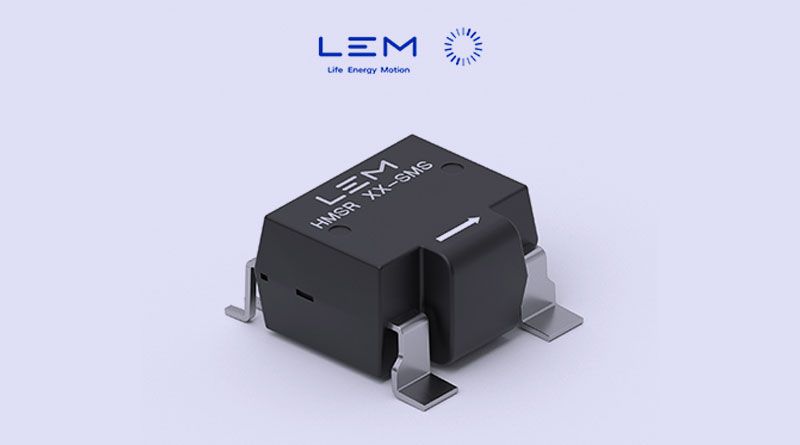With the electrification trend and the increasing energy demand, choosing a reliable and proven way to manage power/electricity production, storage, and consumption has become paramount. More than ever, it is essential to use the correct amount of electricity and to maximize its efficiency to avoid waste.
In this context, the current flow must be monitored even more precisely. This is where current sensors come into play.
And with the trend towards miniaturization, the current sensing function has to be smaller, smarter and cheaper.
This is where Integrated Current Sensors (ICS) make all the difference.
The features of an efficient Integrated Current Sensor
Integrated Current Sensors need to be smaller, smarter, and more affordable to meet the new constraints of the latest motors and devices. With this in mind, LEM R&D has been actively developing a range of ICS with two main objectives:
- Reduce the footprint of the current sensing function
- Simplify the integration of the current sensing function into a system
These current sensors have proven to be a very effective way to measure electricity wherever it is transported, used, transformed, or converted for automotive, industrial, or residential applications.
Integrated Current Sensors – how does HMSR SMS work?
Thanks to technical progress in semiconductor packages, it is now possible to integrate all the functions of a current sensor in a single package. HMSR SMS from LEM builds on this technology. The current flows through the ICS, and the induced magnetic field is detected by two Hall effect plates. HMSR SMS operates without contact and provides inherent galvanic isolation, the voltage signal is processed inside an application-specific integrated circuit (ASIC), and the latter also allows adding other ad hoc functionalities.
HMSR SERIES – The first range of integrated current transducers suitable for the most extreme environments
LEM’s research and development team has developed HMSR-integrated current sensors with the objective to perform in the harshest conditions, even with significant electrical noise. This achievement is possible thanks to a unique isolation concept that allows HMSR SMS to remain stable and reliable in any condition.
This unique robustness makes HMSR SMS a major component in the field of electrical measurement for low currents.
What makes LEM’s HMSR SMS so unique?
For low currents, shunts are still a suitable solution; however, they have isolation problems and cannot ensure the current detection function alone. In addition, they require amplifiers and/or analog-to-digital conversion (ADC) to process the measured voltage drop signal.
HMSR SMS has been tested in a laboratory, and the results are impressive: HMSR SMS guarantees 4.95 kV and up to 5.66 kV. In addition, the HMSR series is pre-molded to further isolate the primary bar and has a specific footprint to allow an 8mm dCp/dCI on the landing pad.
The major difference lies in the integrated micro-core inside the HMSR. This micro-core makes the HMSR SMS completely immune to external magnetic fields and grants it high accuracy. HMSR SMS is ideal for solar DC side applications, chargers, etc.
The main technical features of HMSR SMS are:
- SOIC 16 compatible footprint
- Great accuracy: Typical accuracy is 0.5% over temperature and the measurement range – Small hysteresis of <<0.5%
- Strong immunity
- Better immunity to bus bar influence than standard ICS on the market
- Less dependent of the field direction (same perturbation on X,Y,Z direction)
- Same immunity in homogeneous magnetic field
Further technical features:
- Current range 6-30 Arms continuous at 125°C (75 A peak)
- Isolation: 4,950 Vrms
- Global accuracy -25°C: 0.78 %
- Global accuracy -Over T° C: 1.4 %
As a leader in electrical measurement for 50 years, LEM constantly develops new technologies to meet changing needs. However, the research does not stop there; LEM is already working on other ICS to address the constant evolution of the current sensing needs.

Namaste UI collaborates closely with clients to develop tailored guest posting strategies that align with their unique goals and target audiences. Their commitment to delivering high-quality, niche-specific content ensures that each guest post not only meets but exceeds the expectations of both clients and the hosting platforms. Connect with us on social media for the latest updates on guest posting trends, outreach strategies, and digital marketing tips. For any types of guest posting services, contact us on info[at]namasteui.com.

